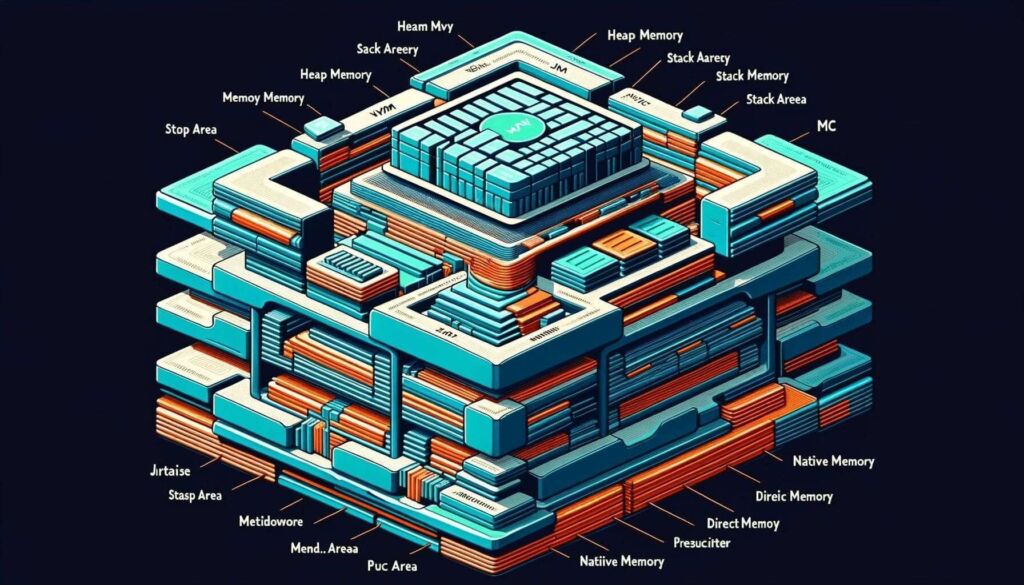What are the Memory Allocations available in Java?
Java has five significant types of memory allocations.
-
Class Memory
-
Heap Memory
-
Stack Memory
-
Program Counter-Memory
-
Native Method Stack Memory
In Java, memory allocation is primarily managed within the Java Virtual Machine (JVM), and it’s divided into several regions. These regions are:
-
Heap Memory: This is the runtime data area from which memory for all class instances and arrays is allocated. The heap is created on virtual machine start-up and may dynamically grow or shrink in size. Garbage Collection primarily occurs in this area, freeing memory by destroying objects that are no longer in use or reachable.
-
Stack Memory: This is where Java methods are executed. Each thread has its own stack that holds local variables and partial results, and plays a part in method invocation and return. Each method call creates a new block on the stack known as a stack frame which contains method-specific values like local variables and the return address.
-
Method Area: This memory area is shared among all threads and stores class-level information such as class structures, method code, and constant pools. It’s a part of the heap memory but has its own management and GC techniques.
-
Native Method Stack: This area is not written in Java and is reserved for native methods of the application, typically written in other languages like C or C++.
-
Program Counter (PC) Register: This is a small memory space that stores the address of the JVM instruction currently being executed. Each thread in Java has its own PC register.
-
Direct Memory (Non-Heap Memory): This is memory allocated outside of the managed heap, usually by the Java Native Interface (JNI) or by creating a direct ByteBuffer. It’s useful for large memory operations like those used in NIO channels.
Understanding how Java allocates memory in these different areas is crucial for optimizing performance and avoiding common issues like memory leaks and out-of-memory errors.
Related Posts:
The Memory Game VB.NET setup install package(Opens in a new browser tab)
JavaScript Glossary(Opens in a new browser tab)
Why is Java a platform independent language?(Opens in a new browser tab)
What is Java technology and why do I need it?(Opens in a new browser tab)
What are the differences between C++ and Java?(Opens in a new browser tab)
